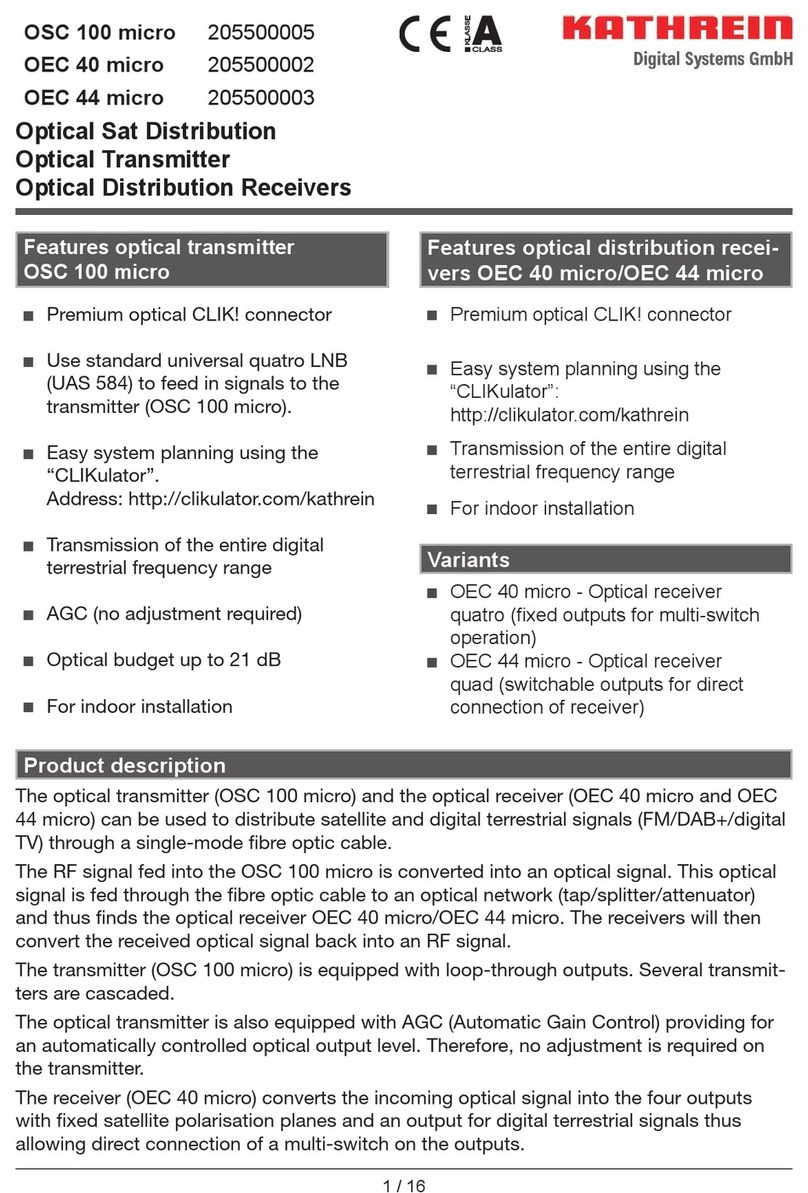10 of 122
Safety Instructions
NOTICE
Risk of malfunction!
ŹMake sure the reader is properly grounded according to the corresponding national standards.
ŹMake sure that the diameter of the ground cable is min. 6 mm2 (typ. 10 mm2).
ŹMake sure to ground the reader such that the distance between the reader ground point and the
ground point in the building is as short as possible.
ŹNote that the equipotential bonding does not replace lighting protection.
5.2
CE Marking for the Kathrein RFID Readers with the Type Designation ETSI
WARNING
Danger to life due to radiation electromagnetic field!
This reader is designed ETSI
for operation according to EN302208. In some circumstances, heart
pacemakers may suer interference if wearers are close to the antenna when the unit is in operation
(reader and antenna).
ŹWhen the unit is operated with antennas connected, comply with the human exposure regulations
in accordance with EN 50364.
ŹEnsure a minimum clearance of 35cm between the antenna and the human body.
ŹComply with the operating instructions for RFID antennas.
ŹIn case of doubt, make sure people with peacemakers contact the manufacturer of their peace-
maker or their doctor.
5.3
FCC and ISED Canada Regulatory Information
The operator and the specialist company which carries out the installation are responsible for ensuring that
only certified systems are used in the United States. Use of this system in any other combination (e.g. sev-
eral antennas which transmit the same information in the same location) is expressly prohibited. Changes
or modifications not expressly approved by the party responsible for compliance could void the user’s
authority to operate the equipment.
To meet the certification regulations according to Part 15 of the FCC regulations in the United States:
ŹMake sure the operation is subject to the following two conditions: (1) this device may not cause harmful
interference, and (2) this device must accept any interference received, including interference that may
cause undesired operation.
ŹMake sure the unit is properly installed, see
FCC RF Radiation Exposure Statement, p.11
and
ISED RF Radiation
Exposure Statement, p.11
.
The readers with the grantee code WJ9 are designed to operate under FCC Part 15 and can be found at the FCC home-
page. This device complies with Part 15 of the FCC Rules and with ISED license-exempt RSS standard(s).
This device contains licence-exempt transmitter(s)/receiver(s) that comply with Innovation, Science and Economic
Development Canada’s licence-exempt RSS(s). Operation is subject to the following two conditions:
(1) This device may not cause interference;
(2) This device must accept any interference, including interference that may cause undesired operation of the device.
ISDE
Cet appareil contient des émetteurs / récepteurs exemptés de licence conformes aux RSS (RSS) d'Innovation, Sciences
et Développement économique Canada. Le fonctionnement est soumis aux deux conditions suivantes:
(1) Cet appareil ne doit pas causer d'interférences;
(2) Cet appareil doit accepter toutes les interférences, y compris celles susceptibles de provoquer un fonctionnement
indésirable de l'appareil.




























